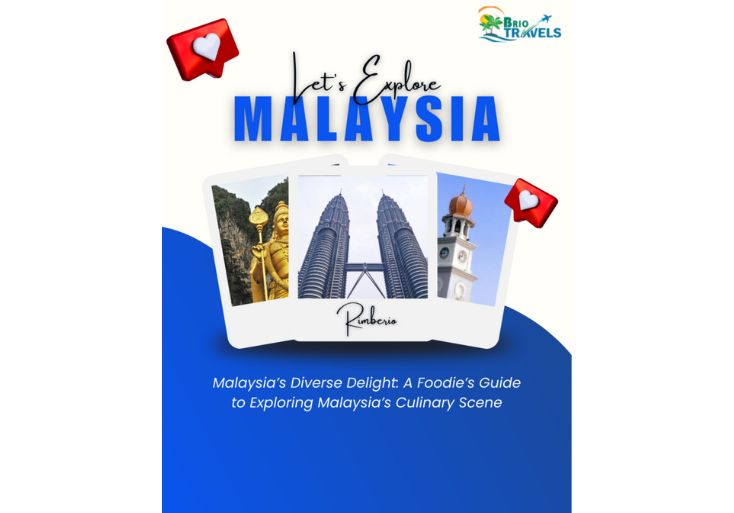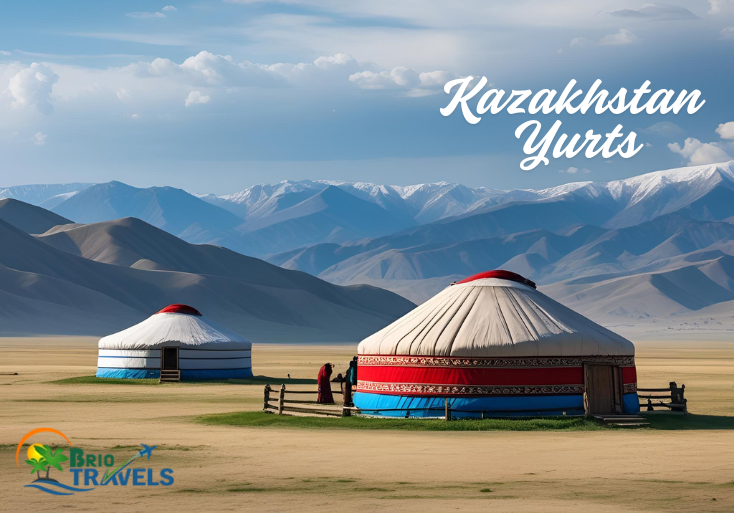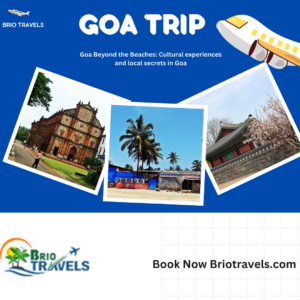Malaysia’s Diverse Delight: A Foodie’s Guide to Exploring Malaysia’s Culinary Scene
Malaysia is the paradise of gastronomy, being rich in the blend of Malay, Chinese, and Indian flavors, thereby creating its unique culinary culture; every dish has its own history. From roadside stalls to fine-dining restaurants, it is a must-see experience for each traveler: Diversity Delight of Malaysia.
It is festooned with colors, alive with tastes, and diversity. Explore the must-try dishes, namely Nasi Lemak, Char Kway Teow, and aRoti Canai.nd Every state has its unique offerings: from Penang with its Laksa to Sabah with its fresh seawater fish. The harmony between spices and cooking methods is at the center of every meal.
Food markets are indeed for brave souls with a taste for adventure. Many more such places exist under one roof: Jalan Alor in Kuala Lumpur and Gurney Drive in Penang. The stalls there serve the most famous Malaysian delights.
Packages vary according to visitor tastes, keeping them entertained from group tours to cooking classes—from Delhi, which covers the entire culinary footprint of Malaysia. Guests come to a land of many cultures and experience the local food culture about which everything is shared.
Merging Malaysia: A Culinary Coruscation
Food traditions in Malaysia, as if by incantation, seem to enfold the Malay, Chinese, Indian, and Peranakan cultures quite indiscriminately. Each culture has different tastes to impart to its unique culinary creations; the blending of all these culinary cultures makes Malaysia’s Different Delight truly an epicurean feast. Malay, on the other hand, is rich in spices such as coconut cream.
Turbo-charged flavor accounts for the Nasi lemak and rendang. Chinese constitute the fruitful partnerships of wok-charred noodles, roasted meats, and dim sum. Indian cuisine shoves rich aromatic spices and flavorful essences into the arena with winners such as roti canai and curry laksa. Peranakan or Nyonya food truly encapsulates fusion cooking: Chinese ingredients with Malay spices.
Malaysian recipes are characterized by a profusion of fresh herbs and spices. Ingredients such as lemongrass, pandan leaves, and tamarind sauce are used to make it up. Traditional methods of preparation include slow-cooking over the fire or burning charcoal, with the smoky flavor paramount.
Food lovers are allowed to experience these flavors in a taste of Malaysia tour package. These tours will incorporate local markets, street food, and heritage restaurants. From Delhi, these Malaysia tour packages are anticipated to open the doors to these diverse flavors. Each dish speaks of the history and tradition. Exploring Malaysian food is probably the most exciting way to learn about their culture.
Food has always been placed in the limelight in Malaysia—the tourist wonderland in question. Little else whets the fancy of chit-chatting about an extraordinary country whose many cultures are worth living in. Across all these dishes, the one thing that can perhaps be likened is the bold flavor that sharply catapults onto the palate: Malaysia’s Different Indulgences.
Malay Delights—this is their national dish comprising coconut rice, sambal, and fried anchovies. Always wafting through evening markets are the tempting smells of marinated satay skewers. Rendang—the ever-rich-and-spicy beef, into an exceptional spice blend, slow-cooked to perfection.
The plates of Malaysia’s Chinese ancestors include
The plates of Malaysia’s Chinese ancestors include Char Kway Teow – quick and hot – for this stir-fry noodle dish, which becomes furious from its speedy preparation to consumption, a noodle delicacy popularly known throughout the region. Tender chicken with the aroma of rice – thus it is said, Hainanese chicken rice. Bak Kut Teh – herbal soup – with pork ribs in herb broth. Roti Canai is Indian Malaysian. That’s flatbread, crispy, and eaten predominantly with curries. Last comes this: banana leaf rice – It comes with rice, veggies, and nail-biting hot curries. A stuffed pancake that is an iconic street food is Murtabak. Flavors of Nyonya and East Malaysia. As for Laksa hot noodle soup, it can now conveniently be served with coconut milk or, more exotically, processed from tamarind. Sarawak Kolo Mee, very simply put, can be termed pretty noodles without any taste. For international travelers, one original, carbohydrate-heavy specialty of the Bornean is claimed to be ambulant, which has arguably been closely experienced through travel packages. The most accurate travel style for travelers visiting Delhi would be to compare their adventure tours with tours in Malaysia. Food tours in Malaysia are not an exception for choosing or negotiating since those tours are perhaps the most definite ways one could observe and relish the Malaysian culture arguably the most favorable to a traveler.
A damn street missed fine dining but Malaysia certainly has it very well covered under the blanket of foodies for an endless gastronomical spree. It houses every dish inside itself as Diverse Delight in Malaysia.
In Kuala Lumpur, Jalan Alor is filled with thrumming stalls all hawking grilled seafood, satays, and noodles, while Gurney Drive in Penang celebrates Char Kway Teow and a bowl of Assam Laksa. It’s fresh seafood for sale, cook-and-eat style, at the Kota Kinabalu Night Market.
Local Food Courts
Hawker Center is an epicenter for Malaysian recipe cooking. Lot 10 Hutong in Kuala Lumpur gathers an ensemble of classic street food vendors, and Tek Sen in Penang serves an endless variety of food. What you can expect here is a treat for your taste buds while remaining easy on your pockets.
Modern fine dining, yet still so distinctly Malaysian. It takes modern fine dining with a local interpretation. The marriage of local techniques with international ones in these cities would mean their greater acceptance of the variety of variety—new lenses these restaurants manipulate in the act of examining what Diverse Delight is.
This is one such expedition that one would indulge in as seen from the Delegation package with trekking and all that allows the setting of the foot onto some of the best gastronomical sites. Cultural history is learned; food is the perfect way to gain a cultural experience.
Food Festivals and Hidden Culinary Treasures – The Present Diverse Malaysia
A paradox, indeed, that within so small a place, Malaysia could be called paradise for the foodie; the ambiance created by such food fests makes every trip special for the guests. It may not be too glamorous, but prolonged events and tours centered on local foods serve to further glorify Malaysia’s diverse delights.
Doing Experimental Cooking and Celebrating Food Events
Almost every part of the world celebrates food at some point of the year. There exist, among others, the Malaysian Food Festival and the International Penang Food Festival, where gods of the kitchen become chefs and street-food vendors serving spicy-hot curry, Malay preserves, and, of course, mouth-watering desserts to every visitor, be they locals or tourists. So much flavor, am I correct?
Gastronomic Classes-Culinary Tours
The boon cooking classes are designed for tourists on a trip to learn the local dishes, such as Nasi Lemak, Laksa, et al. Well, of course, food tours do come with tasting the weirdest of restaurants and bustling street stalls. Stand next to mouth-watering stuff, and you have a packed, delicious adventure. It is indeed possible with these beautiful Malaysian tour packages.
Hidden Treasures-forgotten Taste Adventures
That weak memory of homely cooking would be experienced in the kitchens of ancient, traditional villages. It makes it possible for tourists to dine with them and have a slight window into their lives and culture. How much local tourists can enjoy exactly flavored, hidden little cart-kitchen stalls, hence reflecting the diversity of Malaysia. This Indian package may also find a good fit in the discussion of the food wonders that Malaysia can offer. A gastronomical odyssey to remember: more or less anything and everything Indian one could shove into one’s mouth.
This is the best time of the year for fork lovers.
To grab some sweet errand time in Malaysia, the food festivals would deem application, sweet to the fun of eating. Right from the months of the Penang International Food Festival in April to the almost nuisance-like variety of dishes in the late months of July right until September, there are just so many of them. Now that the months from November through February create an invitation to street gluttony, it makes sense. Associate these months with the rainy season, and hence arrives incredibly great, fresh seafood, and the comfort of food to keep you warm. For overindulgent-rich varieties, June to August calls for experimentation with the foul stinking fruit, it is every season. Each season is celebrated by its share of festivals.
Best Applicable Tour Package in Malaysia
Some good tour packages make it easy to engage in food exploration. Some might touch upon street food only regarding their tour package, while others would differ and opt for upper-end classy dining. Guided food tours open local gems to people’s eyes. Some homestay packages are offered for those who wish to glimpse local village cuisine.
Malaysia tour packages for Delhi cover that as they combine all flights, food interests, accommodations, hassle-free, and mannered service to Malaysia Diverse Delight, Malaysia’s best experience with great planning. Each bite has its story, thus making the journey one worth remembering.
Foodies’ Heaven truly sees this gastronomic tour step into Malaysia’s most eclectically diverse culinary traditions.
Here within, the specific influences of four major, Chinese, Indian, and ulturesPeranakan-melt and amably coalesce. In fact, from Nasi Lemak Kuala Lumpur to Laksa Penang, there are dishes in micro-regions. And inter-regional variance in taste leaves each dish forever unforgettable.
New entrants include some food festivals in interleaved, like BBQ satays, seafood noodles, and spicy curries. Street vendors, hawker centers, and fine dining restaurants. A whole journey to feel the culture and tradition of Malaysia within one living space.
The gourmet tours in Malaysia. Tours that may combine culinary tours, cooking classes, and village tours to taste the culture. The package is an authentic gastronomic experience for travelers in Malaysia offered by Delhi. It indeed does wonders in designing every bite for the last and most memorable moment of the tour.
Thus, many obligations and fun is how well Malaysia is welcoming you. It is this kick-butt journey that can lead the way for many to explore here. Edit your travel plans, taste all your favorites, and explore Malaysia’s true essence through various treats.









